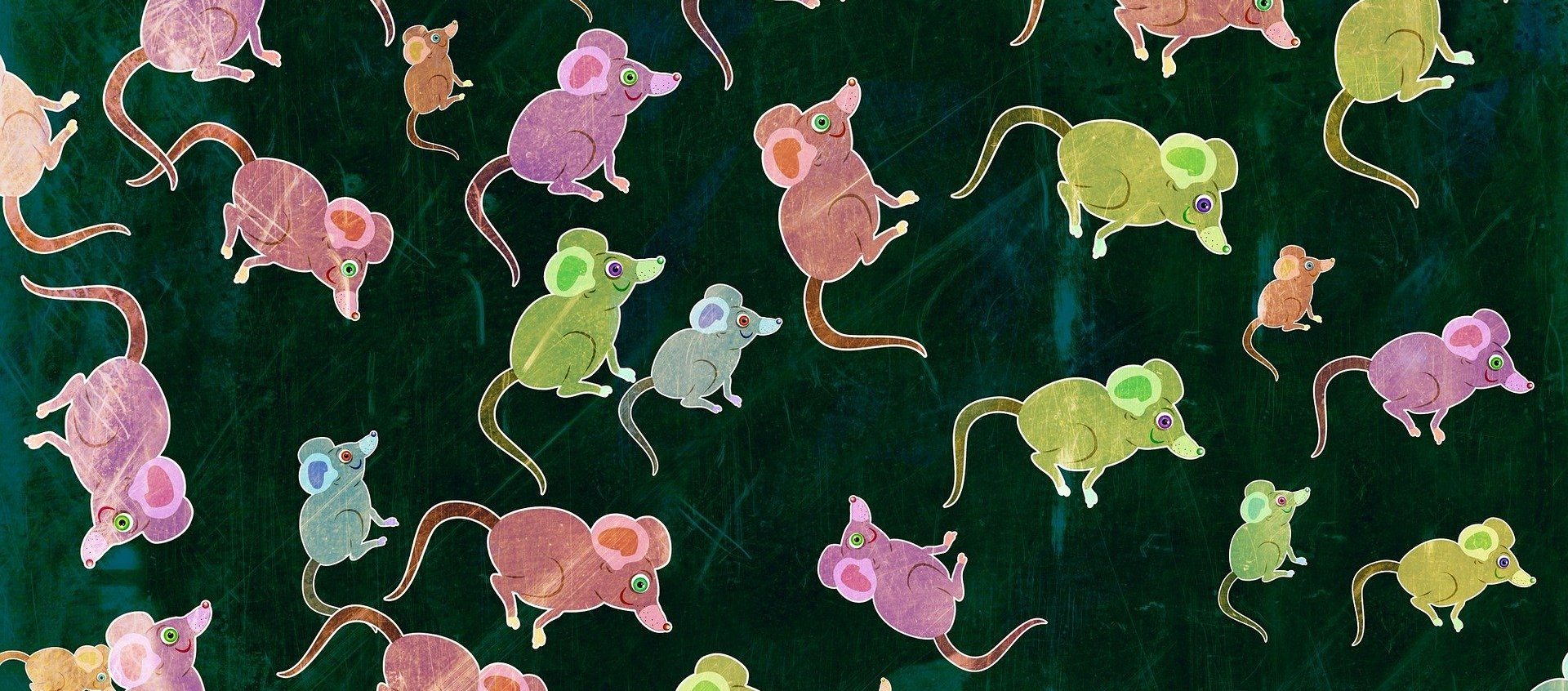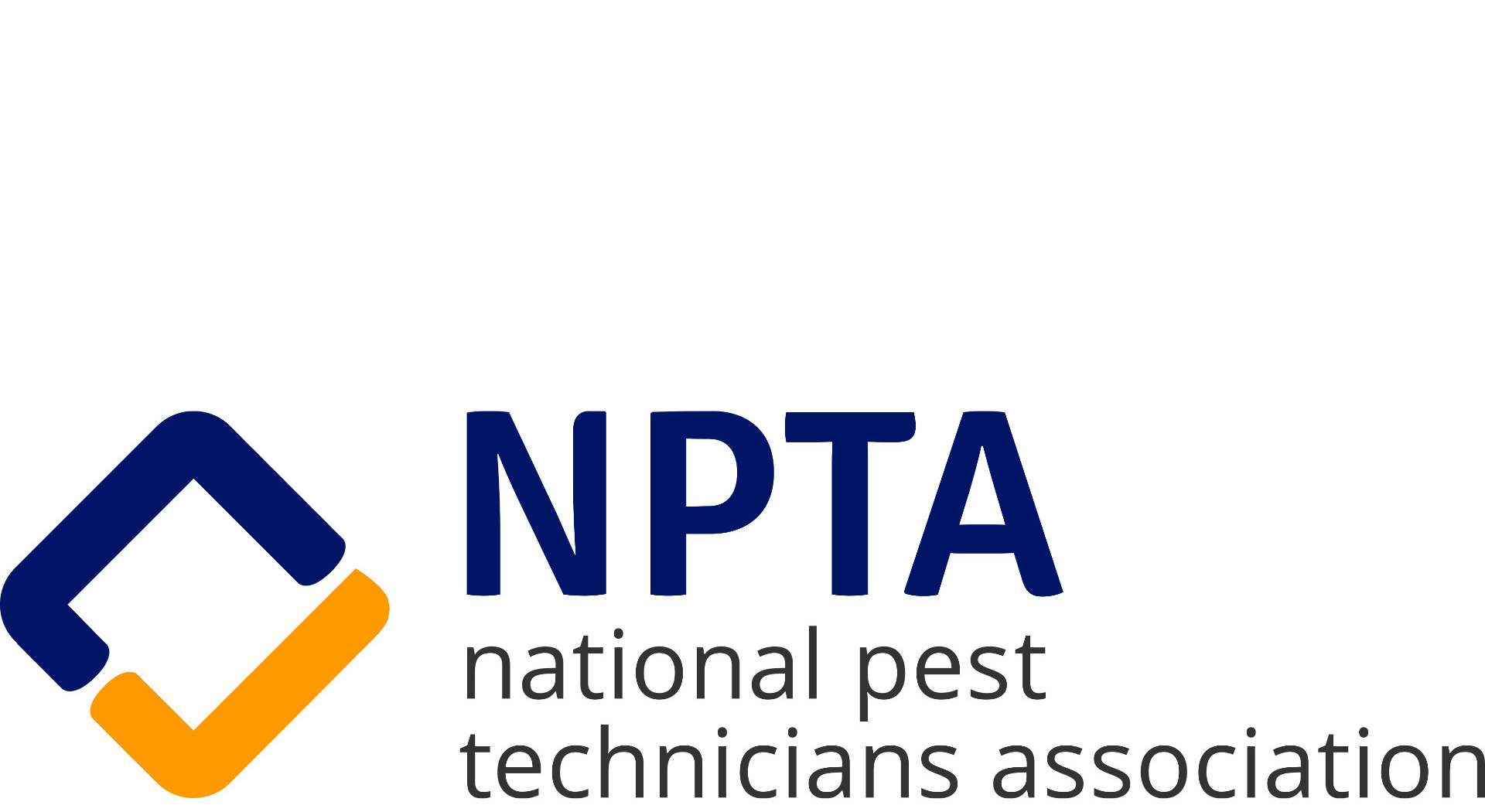"I hate those meeces to pieces"
Posted on 5th March 2020 at 18:16
Remember Jinx the Cat from Pixie and Dixie? “I hate those meeces to pieces” was his cry as they constantly outwitted his attempts at catching them, well, many pest controllers feel the same way. The reason you see is that too many people don’t really understand the difference between the different species of mice, shrews and voles and that goes for the people working in our industry.
Most people see a grey or brown blur down by the skirting board and think “Mouse!”, they reach for the phone and out comes the local pest control company who will often nod their head wisely and reach straight for the rodenticide. The problem with this picture is that we should not reach for the poison just because we saw a mouse; firstly we don’t know if it was a mouse and we don’t actually have the right to put down rodenticide for everything that we consider a pest.
The use of rodenticide is governed by the ‘Label’; the label forms the Book of Rules when it comes to the poison and is the user information, this tells us exactly where we can use it; for example not every rodenticide can be used outdoors and it certainly can’t be used for every type of different rodent species. When you purchase rodenticide it will say on the box in extra-large letters – RAT AND MOUSE KILLER in a very dramatic way along with the typical picture of a rat; subtlety is not in the mind of the manufacturers.
On the rear in very small print it will say something like: Target – Mice (Mus musculus) Rats (Rattus norvegicus) and these are the only TWO species that it can be used on, but why let that stand in the way of convenience?

The truth of it is RAT AND MOUSE KILLER is only for house mice and rats; two species that exist in our homes and pretty much nowhere else. These two species of rodents have evolved over thousands of years to live under our feet, eating our food, sleeping in our walls and lofts and breeding in our homes – the are termed commensal rodents which as a definition is living in a relationship in which one organism drives food or other benefits from another organism.
The creature that ran through the lounge last night? It probably wasn’t a house mouse or a rat but just a little field mouse or a shrew and so we’ve put together a guide to those creatures that can be regarded as pests if they’re inside your home but not to be confused with those pests that can be poisoned.
There are 10 species of mice, voles and shrews living in the UK and these form an important part of the natural cycle of life; at the base are plants and these are eaten by the small herbivores such as mice. The important part of the cycle is that mice are eaten by the carnivores, which when they die decompose and return the nutrients to the soil thereby enriching the grass. This is the natural order of things and one which we disrupt through the introduction of rodenticide; the rat and mouse killer ends up poisoning the carnivores – birds of prey in this case such as owls and kestrels wiping out the control mechanism for small mammals.
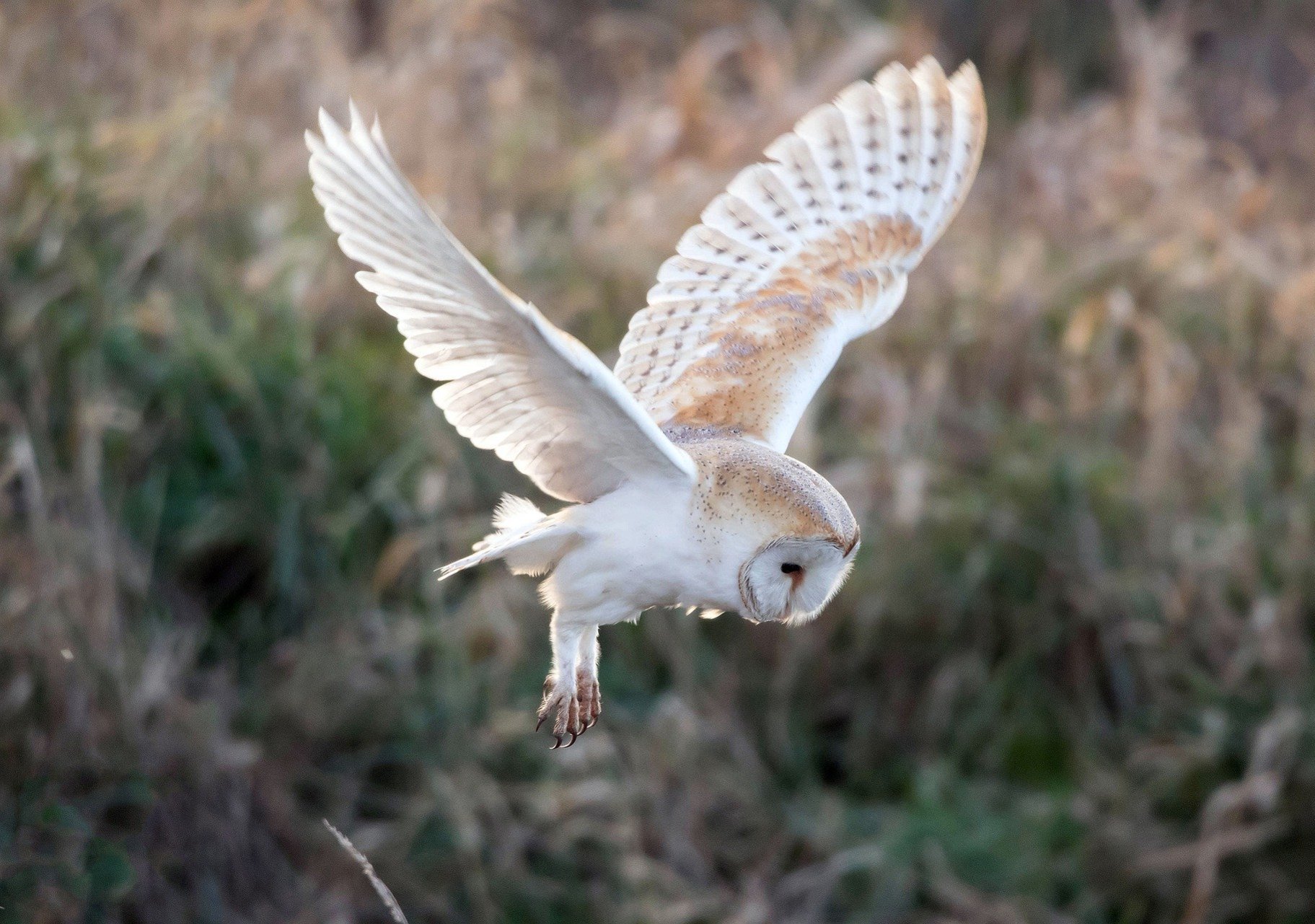
All species of mice are primarily seed eaters and they will supplement their diet with insects, fruit and roots; the only mouse that hibernates is the dormouse and so winter can be a harsh time for our mice and this is when they will work their way inside our properties.
House Mouse
Mus musculus

As its Latin name suggests this is a chunky robust mouse, uniformly grey in colour with large ears and smaller eyes than other species. The house mouse has a hairless tail which is the same length as its body, they tend to have a very strong pungent aroma which is easily detectable. It originated in Asia and has since successfully colonised the whole world except for Antarctica, but that’s probably just a matter of time!
Field Mouse
Apodemus sylvaticus
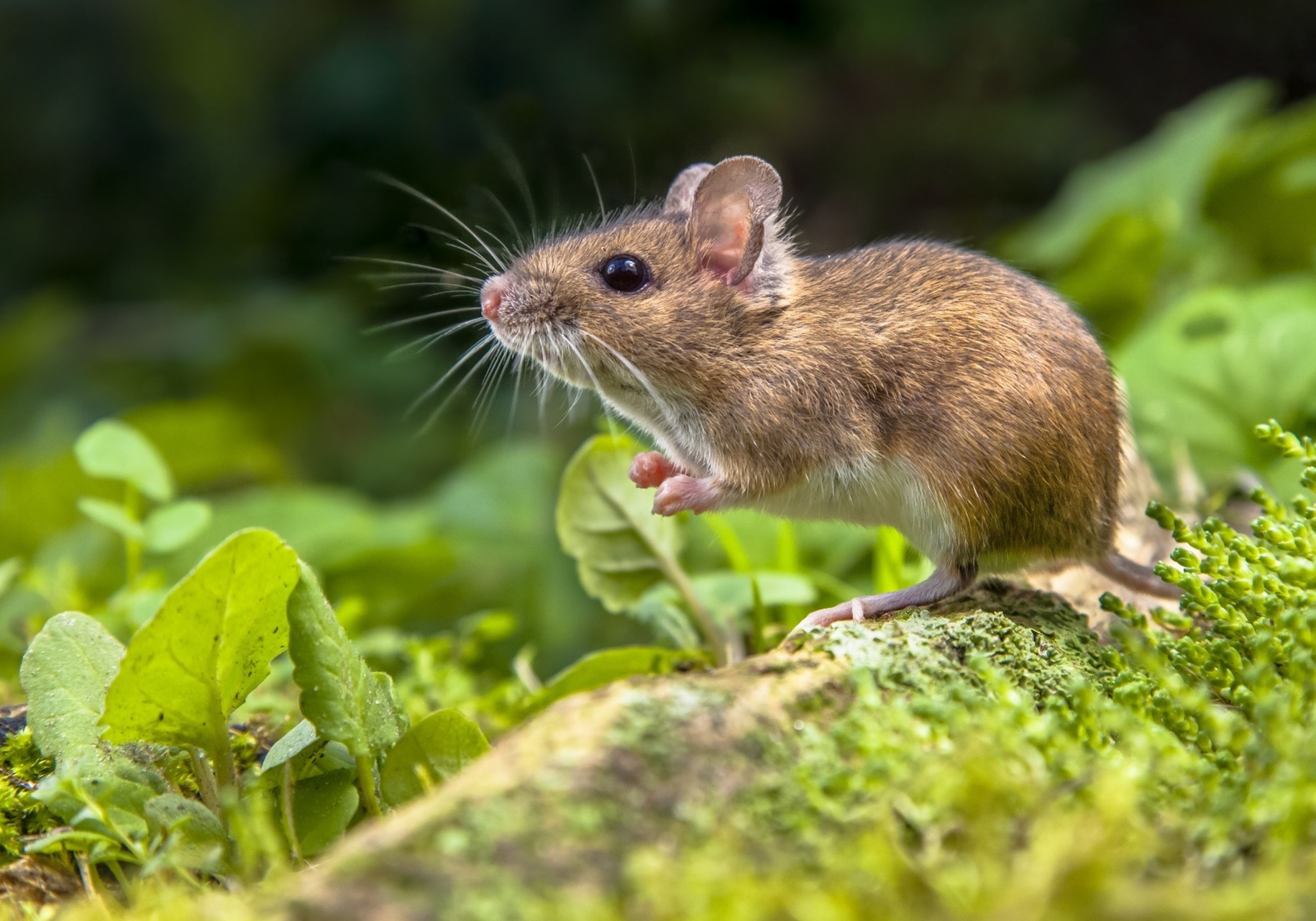
This is the culprit of many a ‘mouse’ sighting, sandy brown on top with a white belly, these have much larger eyes than its urban cousin with a hairless tail the same size of its body. Lightening quick and often just a blur these are extremely cautious and will dart about sniffing anything unfamiliar before approaching. Field mice are great jumpers and able climbers, we have seen them run up brick walls and enter through redundant pipe holes in the brickwork. Sometimes called the Wood mouse, these animals thrive in gardens all over the area and this is the most common and widespread of all the mice species.
Brown coloured coat with a white belly, around 9cm in length.
Yellow-necked mouse
Apodemus flavicollis
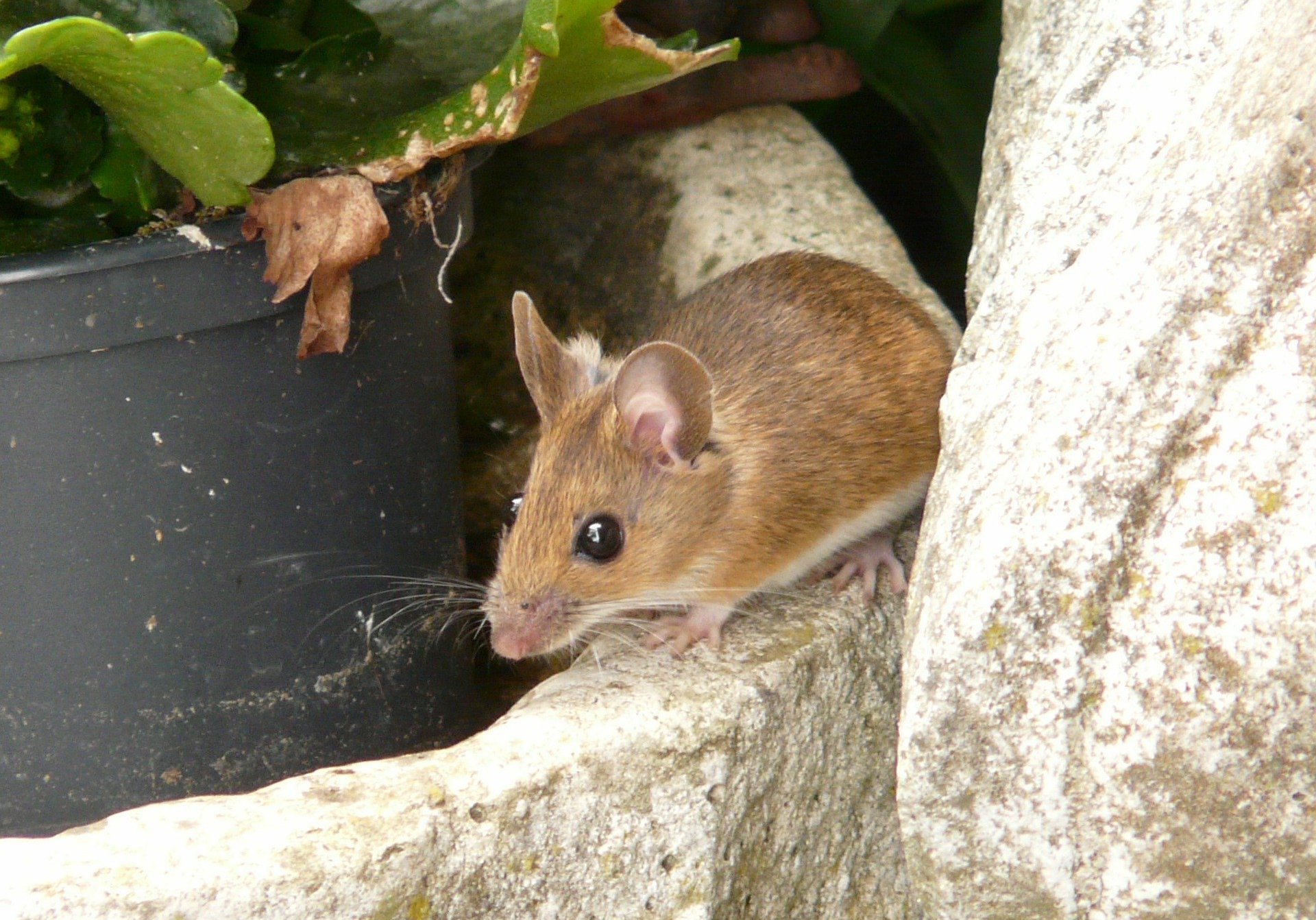
A close relation to the field mouse and only identified as a separate species in 1834, this mouse has a distinctive yellow band around the neck area, found almost exclusively across southern England and the Midlands this is another common mouse that we deal with across Berkshire.
It has slightly larger ears than the field mouse and overall its just a big bigger at 10cm’s, the coat colouring is darker than the field mouse with a white belly.
Harvest Mouse
Micomys minutus
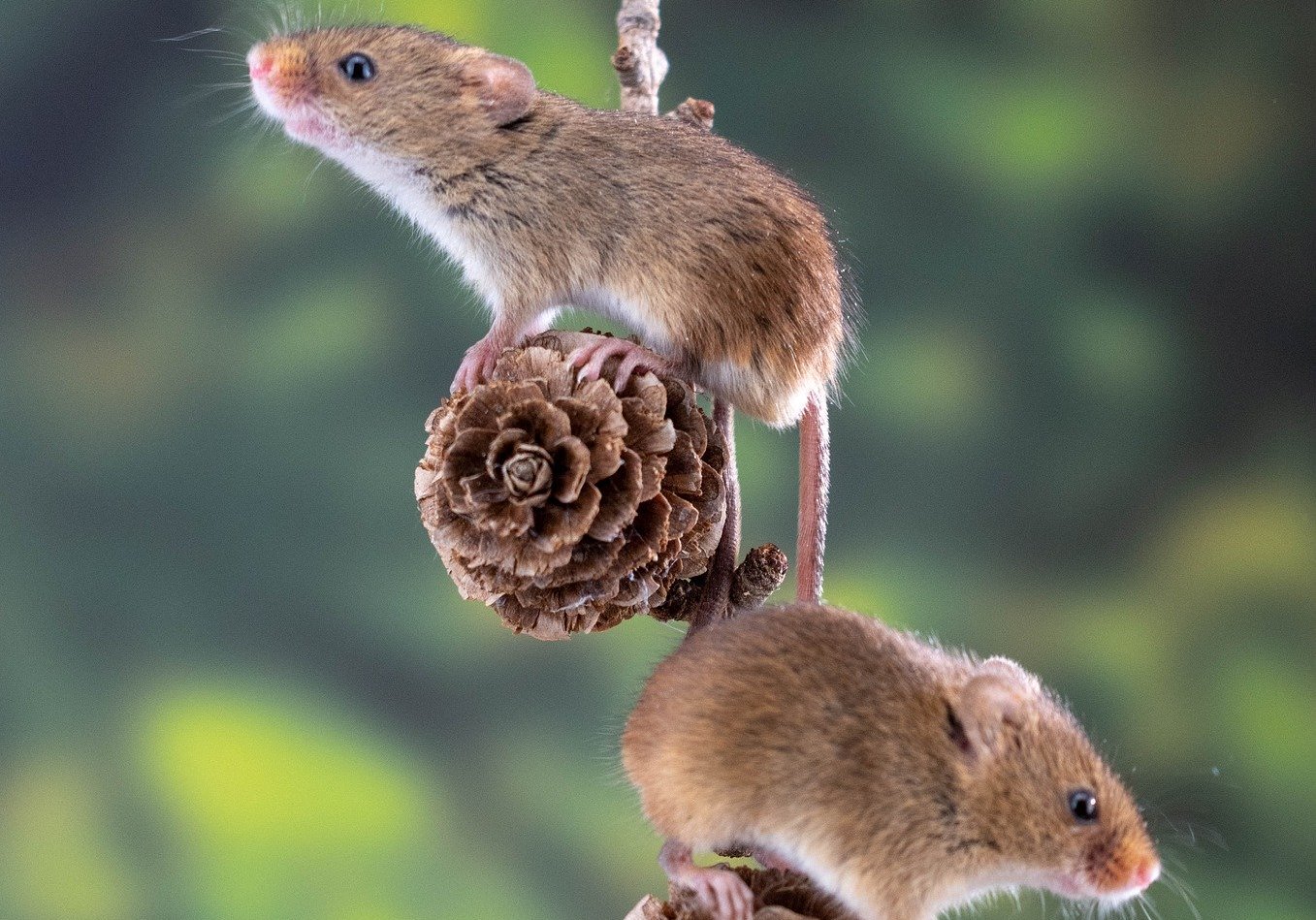
This mouse is hard to find around the urban areas of Berkshire due to habitat loss; these are the smallest rodents in Europe and they live in long grass and reed beds. Due to their reliance on habitat you’ll either find dense clusters of them or none at all. The harvest mice shred grasses with their teeth and weave the strips to form a hollow nest about the size of a tennis ball.
Harvest mice have a reddish – yellow coloured coat with a white underside and are about 5 to 7cm in length.
Bank vole
Myodes glareolus
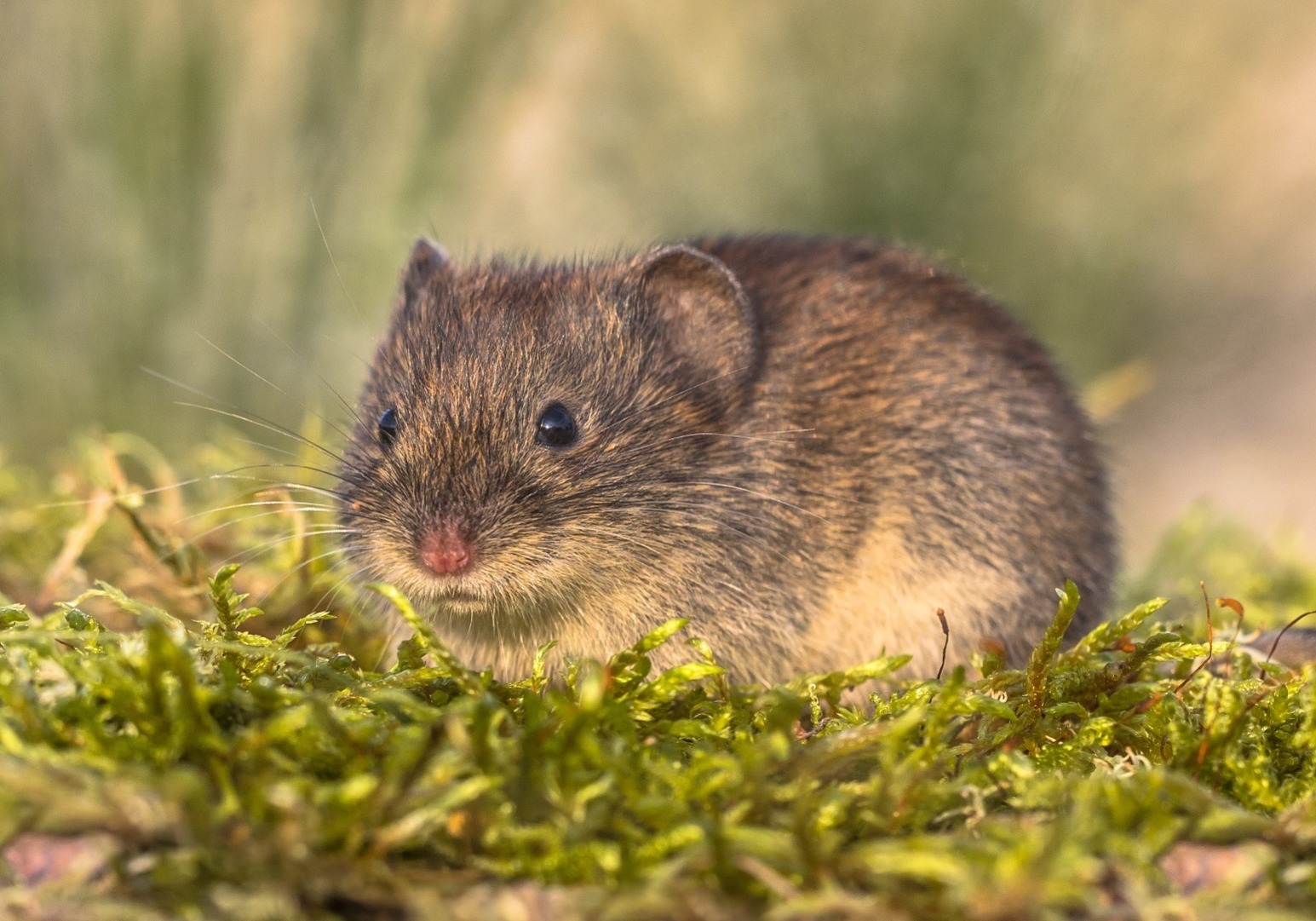
The smallest of all the voles, the bank vole closely resembles a mouse and has just a few subtle differences: a shorter, stouter body and a slightly more rounded head with small ears and eyes. Bank vole also have shorter, more hairy tails than field mice.
Reddish-brown coat with a grey underside, the main way of telling the difference between voles and mice is body shape.
Water vole
Arvicola amphibious
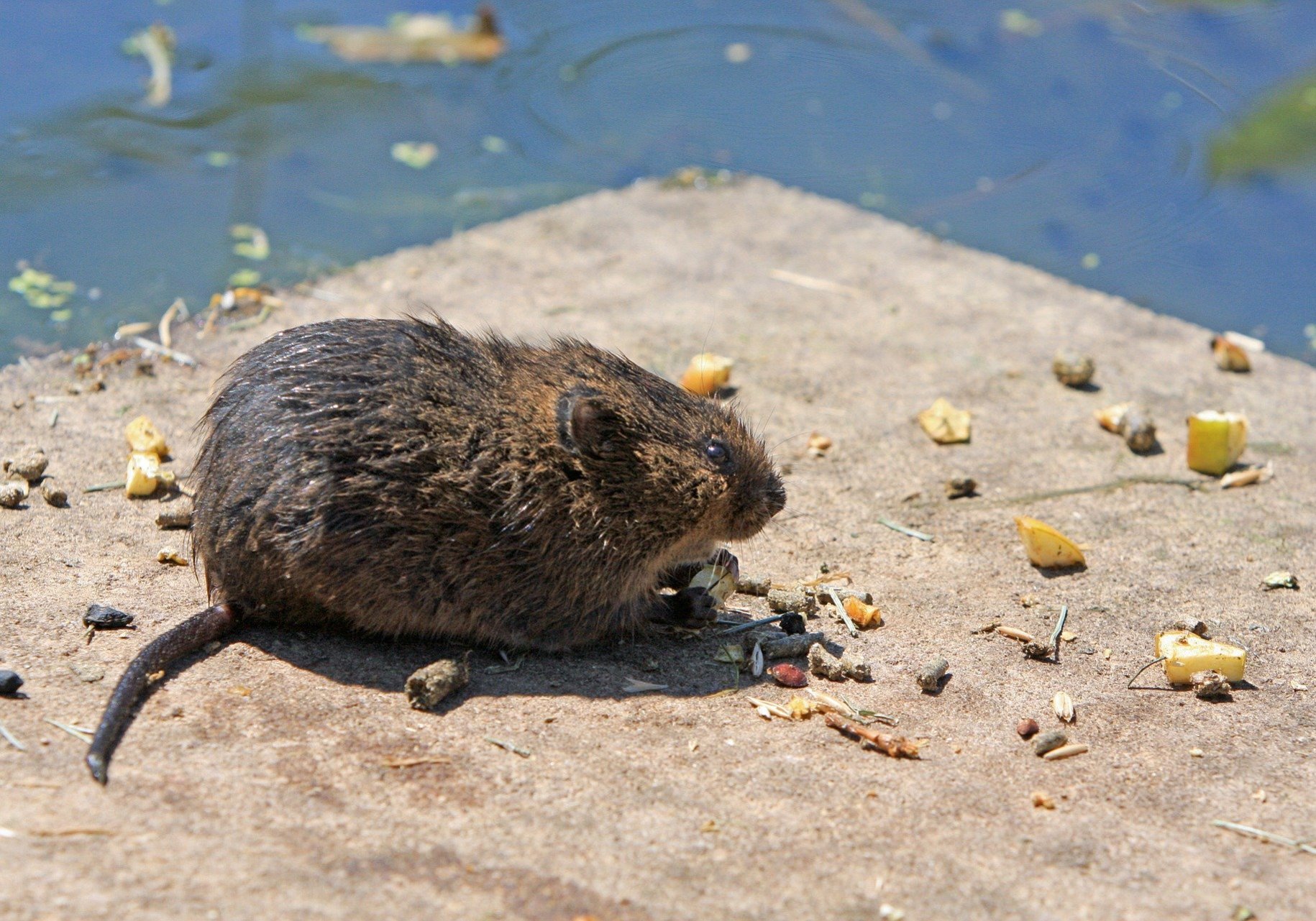
The water rat or Ratty from Wind in the Willows; this vole is endangered because of the confusion between itself and rats and protected in the UK. If disturbed on the banks of a water course you can tell it’s a water vole by the distinctive ‘plop’ sound it makes as it dives into the water, these harmless rodents have declined by 90% in recent years and if they are suspected as being in the area where a rat treatment must take place, you cannot put rodenticide down within 5 metres of the watercourse.
For more information on water vole conservation –
Water voles are a large rodent up to 22 cm in length with chestnut brown fur; the main feature to look for is that absence of ears; being an aquatic animal the water vole has very small ears that lie hidden in the fur.
Field vole
Microtus agrestis
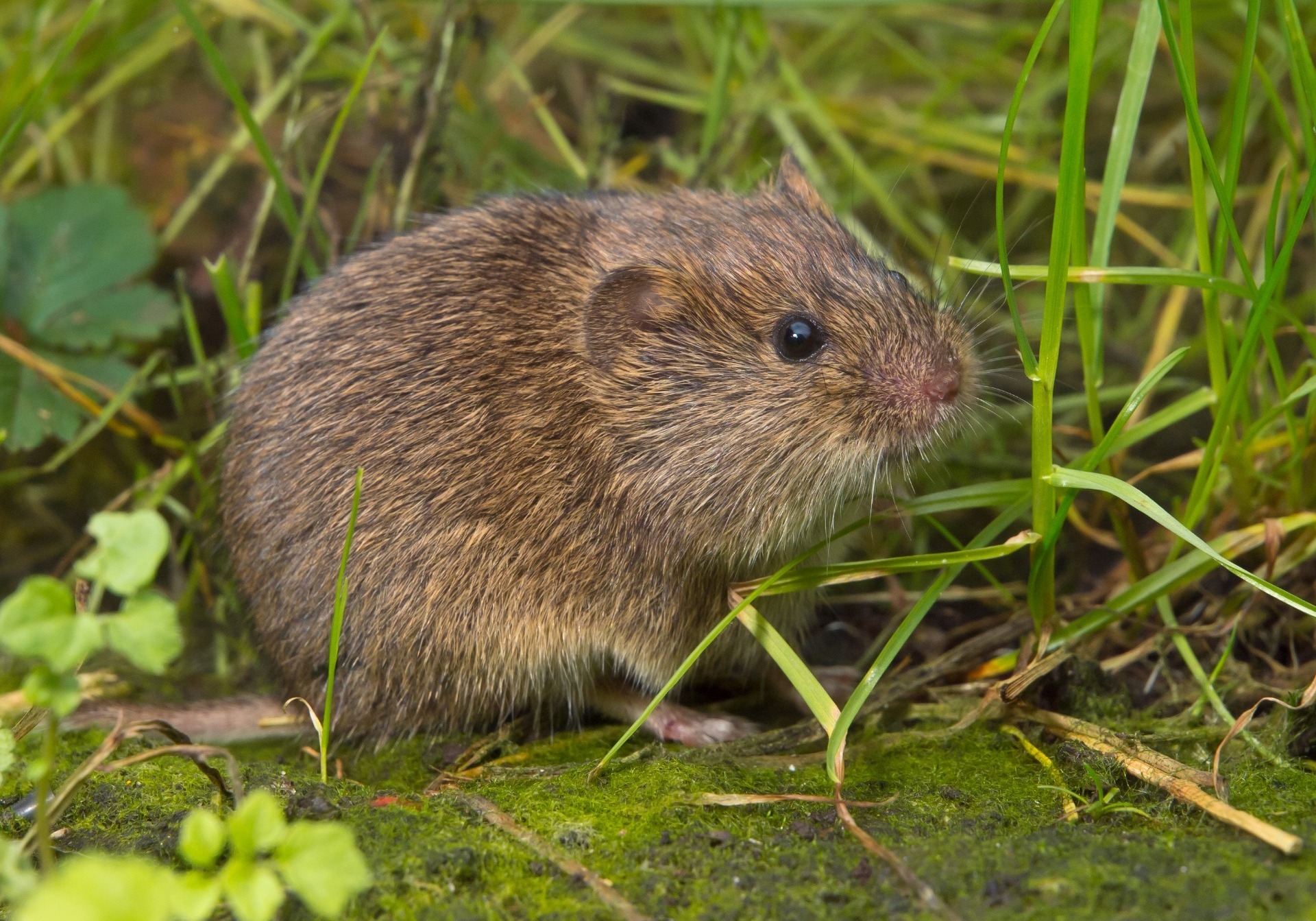
These are extremely common found in grassland and heathland all over Berkshire, they burrow through the grass making runs and so they travel unseen from us; the difference between this and the bank vole is the tail size – another name for the field vole is the short tailed vole.
Around 10 cm in length and with a brown coat with a pale grey belly, these have a shaggy appearance when compared to the field vole.
Pygmy shrew
Sorex minutus
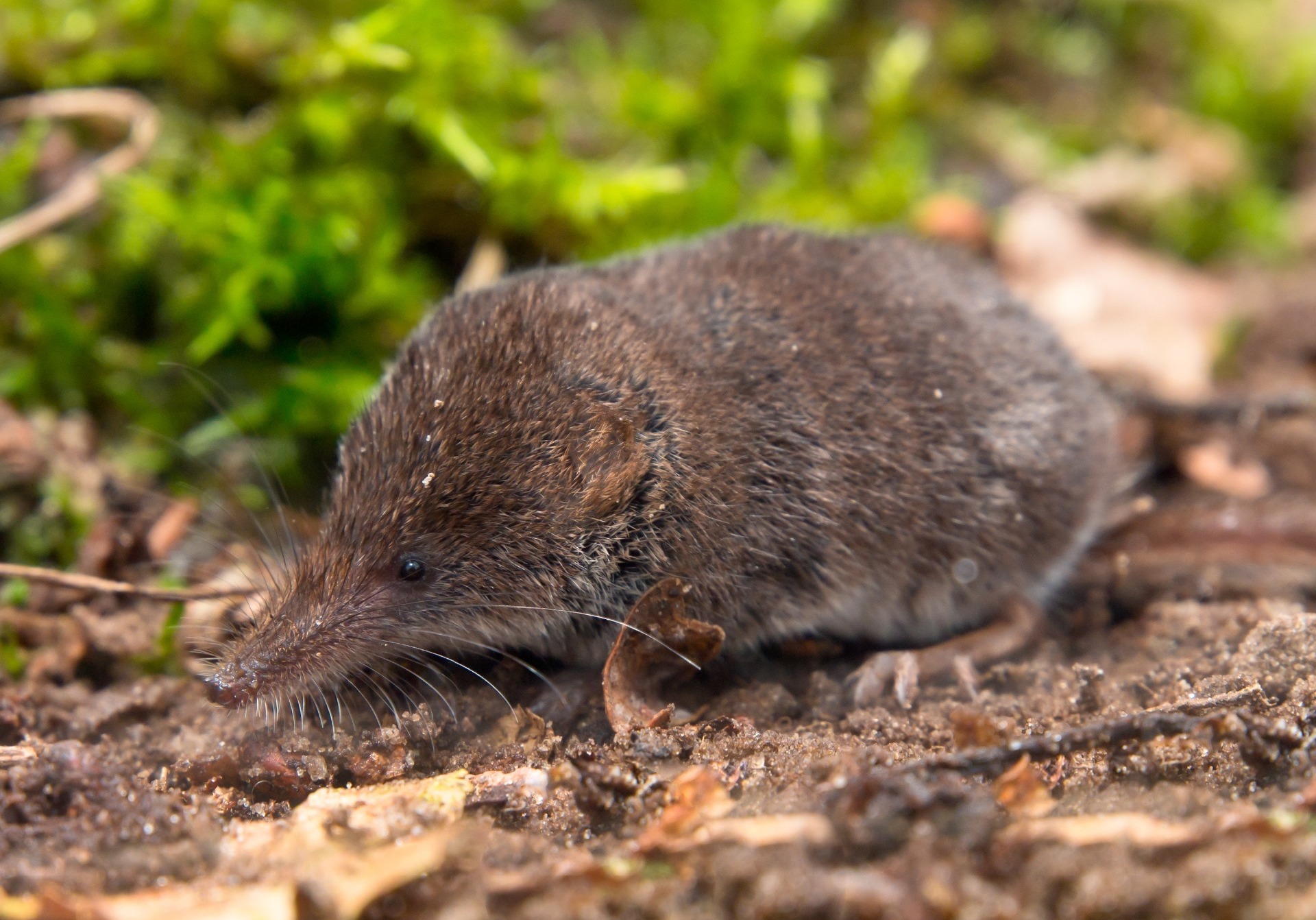
An amazing looking creature, these are tiny rodents that live and feed off invertebrates in the leaf litter, with an incredibly high metabolic rate these must eat every few hours or so. Their small size means that in the winter they are often searching for invertebrates around and underneath door frames and full length window frames in wind blown debris, around 5cm in length they can squeeze through the smallest of gaps and find their way inside, a very common occurrence.
Dark brown with a distinctive pointy snout and tiny eyes.
Common shrew
Sorex Araneus
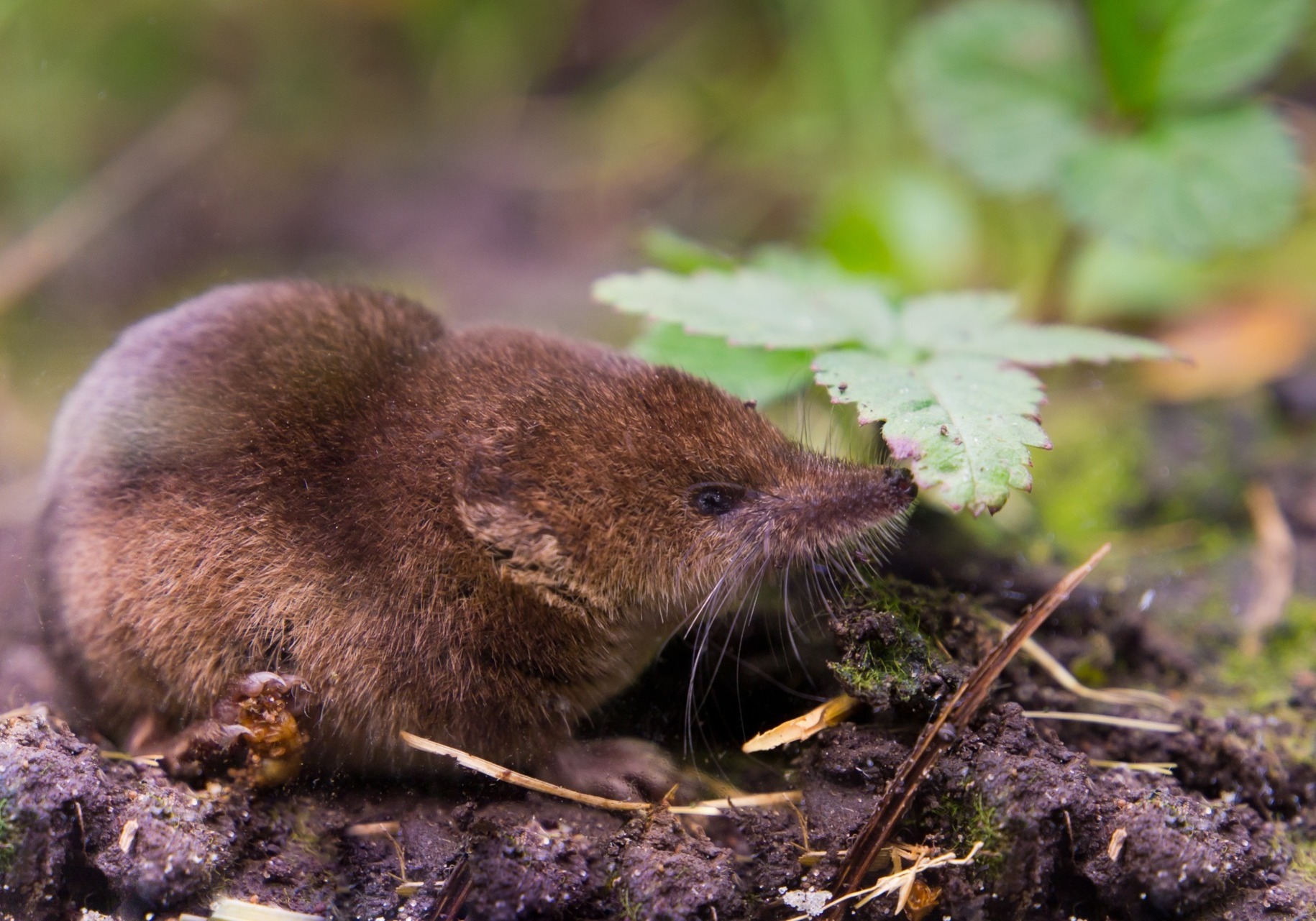
Another abundant species found all over the rural areas of Berkshire shrews are active day and night - shrews have an lovely habit of forming caravans. Baby shrews will grab hold of a tail to the shrew in front of them and they form a chain all attached to mother shrew, and they move around like this in a furry train.
Around 8cm long with dark brown fur with a pale underside; shrews adapt to winter by shrinking, their bodies can shrink by as much as 20% with a return to normal size in the spring.
Barn owls will typically eat around 4 small mammals a night – 1460 a year so thats a good reason to hold back with the use of rat and mouse poison.
When it comes to dealing with mice: voles and shrews included our approach is not to reach for the poison, we trap all our rodents whenever possible: the use of coloured tracking dust applied to suspected entry points means that we can identify how they are getting inside your property. Once we’ve found the entrance we can start sealing up this and any other potential access points, we trap out the resident population to leave you not only rodent free but now in a position where you’ll stay that way for good.
Depending where you live, the style of house and the pests in your area the application of rodenticide will only bring temporary respite from rodent infestation, we follow an organisation called CRRU which is the Campaign for Responsible Rodenticide Usage and we aim to reduce the amount of rodenticide that we use to protect our non-target species like field mice but also raptors like barn owls and ourselves. Rodenticide is working its way into the human food chain and it is certainly a case of less is more when it comes to the application of rat and mouse poison.

Tagged as: mice
Share this post:





